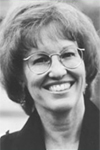 California artist Bev Doolittle
California artist Bev Doolittle
Camouflage Artist Bev Doolittle was born and raised in California. In 1968, she graduated from the Art Center College of Design in Los Angeles. She met her husband, Jay, at school and they started married life with a painting trip to Bryce Canyon and Zion National Parks—a portent of things to come. Read moreCalifornia artist Bev Doolittle
Camouflage Artist Bev Doolittle was born and raised in California. In 1968, she graduated from the Art Center College of Design in Los Angeles. She met her husband, Jay, at school and they started married life with a painting trip to Bryce Canyon and Zion National Parks—a portent of things to come. For the next five years, however, the Doolittle's were art directors in an ad agency in Los Angeles.
“It paid well,” Bev Doolittle explains, “but we didn’t like living in the city. We wanted to be close to nature, to paint outdoors and we wanted to travel.” They have now accomplished both. Their frequent travels and backpacking trips have covered the western United States, Canada, Baja California and East Africa. They now live close to nature in the high desert of California.
It was during this period that Bev's paintings of the American Western landscape and its wildlife began to develop and soon after, she began to portray Native Americans—often including them alongside animal themes.
Doolittle's paintings and prints are collected by those interested in Western themes. Realistic Western art has conventionally been dominated by oil painting, and Doolittle was instrumental in bringing watercolors into the genre.
Doolittle has co-authored and illustrated several books. She has long been interested in the plight of Native Americans, wild animals, and ecological and environmental issues and her books and paintings focus on these issues.
She refers to her style as "camouflage technique" in which certain details of her art can be seen in more than one way. For example, in The Forest Has Eyes, the rocks and waterfalls seen close up appear as the faces of Native Americans when viewed from a distance. In Mesa Ruins close-up viewing appears to show the Mesa Verde Canyon Anasazi dwellings, although from a distance it gives an impression of the eye and nose of a Native American male. In Shoshone Crossing, the snow-filled meadow in which horseback riders are crossing appears from farther away to be the shape of a running horse. Her twenty-four set collection of paintings of dark-brown horses set against light brown rocks and white snow, from a distance and arranged in order spell out the words Hide and Seek.
camouflage art prints for sale, Native American art prints for sale, Bev Doolittle Indian artwork and prints for sale. Prints with hidden images for sale. Birch Trees and Indians for sale. less

A New Way Of Seeing By Bev Doolittle
|

A Prayer For The Wild Things By Bev Doolittle
|

